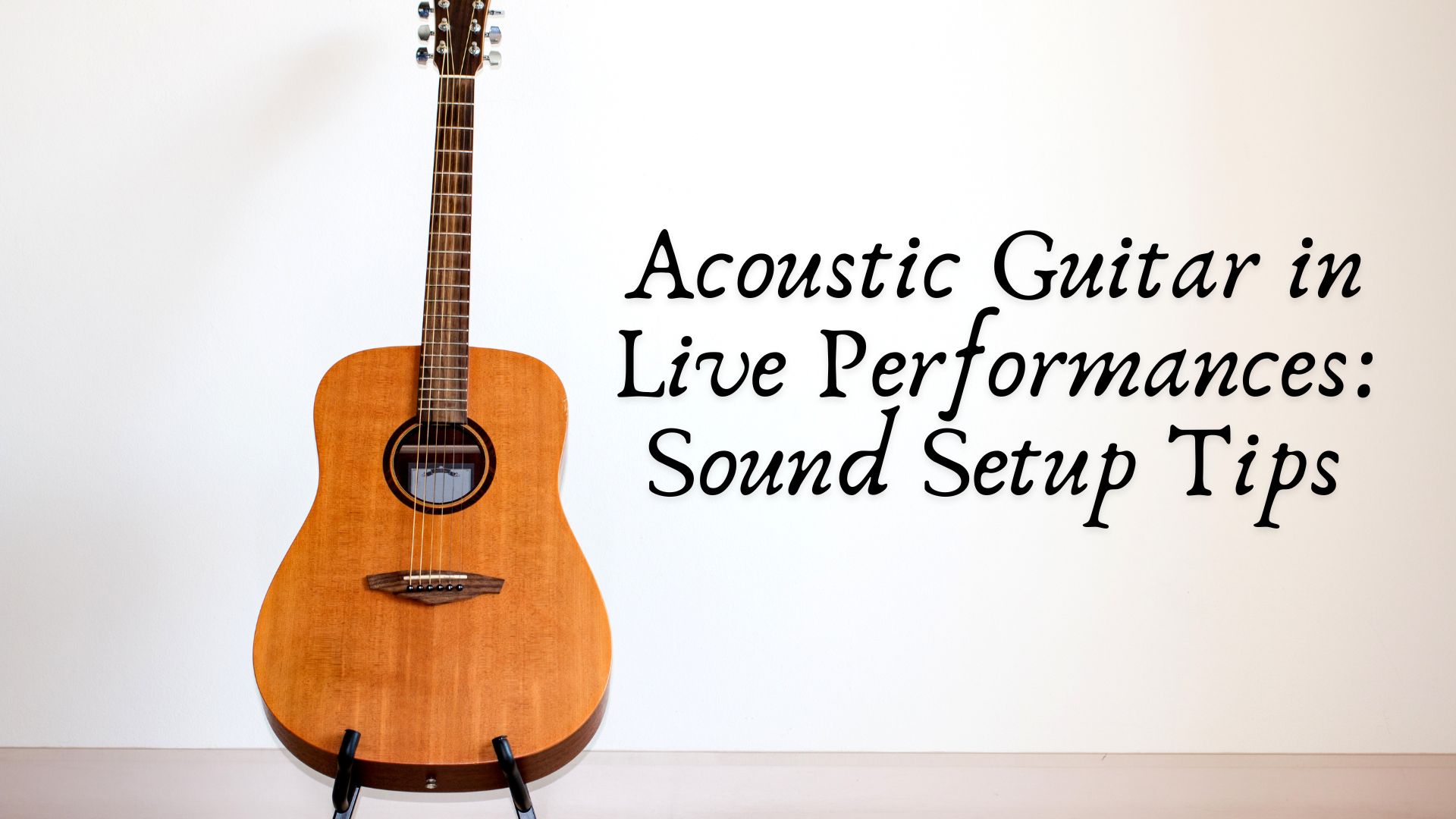Acoustic Guitar in Live Performances: Sound Setup Tips
Performing live with an acoustic guitar can be a deeply rewarding experience, but it also comes with technical challenges that can impact sound quality and performance. Unlike electric guitars, acoustic instruments are more sensitive to feedback, ambient noise, and venue acoustics. Whether you’re playing a cozy coffeehouse or a large concert hall, having a solid understanding of acoustic guitar sound setup is essential to ensure your music resonates with clarity and warmth. This guide offers comprehensive sound setup tips for acoustic guitarists in live performance scenarios.
Understanding the Basics of Acoustic Guitar Amplification
Unlike electric guitars, acoustic guitars typically require amplification that preserves their natural tone. There are two primary ways to amplify an acoustic guitar:
Using a Built-in Pickup System
Many modern acoustic guitars come equipped with built-in piezo pickups or microphone/pickup combinations. These systems allow direct output to a mixing board or amplifier.
Using an External Microphone
A high-quality condenser microphone placed in front of the sound hole can capture the full tonal character of the guitar. This method is favored in studio settings but can be tricky for live performance due to feedback and movement constraints.
Hybrid Approach
Combining a pickup and an external microphone can provide a richer, more detailed sound. The pickup delivers consistent output, while the mic adds tonal depth.
Key Sound Setup Tips for Acoustic Gigs
Invest in a Quality DI Box
A Direct Input (DI) box is critical when plugging your acoustic guitar into a PA system. A good DI box:
- Matches the impedance of your guitar with the mixer
- Reduces unwanted noise and hum
- Often includes EQ and notch filters for tone shaping
Active DI boxes are preferred for passive pickups, while passive DI boxes work well with active pickups.
Use an Acoustic Preamp or EQ Pedal
An acoustic preamp allows for greater control over your tone. Look for features like:
- 3-band EQ (bass, mid, treble)
- Notch filter to eliminate feedback
- Phase switch to reduce phasing issues
- Built-in tuner for convenience
Brands like LR Baggs, Fishman, and Radial Engineering offer reliable acoustic preamps tailored for live use.
Manage Feedback Effectively
Feedback is a common issue with acoustic guitars. Tips to reduce it include:
- Use a soundhole cover (feedback buster)
- Lower stage volume or reposition floor monitors
- Utilize notch filters and phase reversal
- Use in-ear monitors (IEMs) to eliminate the need for loud stage monitors
Mic Placement (If Using an External Mic)
If you’re miking your guitar:
- Place the mic about 6–12 inches away from the 12th fret
- Angle it slightly toward the sound hole
- Avoid pointing it directly into the sound hole to reduce boominess
Use a cardioid condenser mic for best results and minimize bleed from other instruments.
Choose the Right Cables
Poor quality cables can introduce noise or lose signal. Use:
- Shielded instrument cables for connections between the guitar and pedal/preamp
- Balanced XLR cables from the DI box to the mixer
Keep cables as short as necessary and avoid running them parallel to power cables to minimize interference.
Test Your Setup Before the Performance
- Always sound check before the audience arrives
- Walk around the venue while playing to hear how the guitar projects
- Adjust EQ settings to suit the venue’s acoustics
Each room sounds different. Small venues may boost bass frequencies, while larger spaces may require midrange cuts to avoid muddiness.
Use a Clip-On Tuner or Built-In Tuner
Staying in tune is essential. A clip-on tuner allows silent tuning during performance breaks, while many preamps have built-in tuners for easy access.
Optimizing the Acoustic Guitar Tone
Your goal should be to retain the natural tone of the guitar. Here’s how to fine-tune your sound:
- Bass: Don’t overdo it; acoustic guitars naturally have warm low-end, which can get muddy in a live mix.
- Mids: Control is key; mids help cut through the mix, especially in a full band setting.
- Highs: Add sparkle but watch for harshness or sibilance.
Experiment with different settings during rehearsals to find the sweet spot that reflects your guitar’s true voice.
Working with Sound Engineers
If you’re performing at a venue with a professional sound engineer:
- Communicate clearly about your setup
- Label your gear (DI box, pedalboard outputs)
- Let the engineer know if you prefer your own EQ or a flat input
- Always listen to their feedback—they know how the venue responds to sound
Good collaboration with the engineer ensures that your guitar blends seamlessly into the mix.
Backup Strategies
Live performance can be unpredictable. Be prepared with:
- Extra strings and string winder
- Spare batteries for preamps and tuners
- Backup cables
- A second guitar if possible
Having backup gear minimizes downtime and keeps the performance smooth even if technical issues arise.
Conclusion
An acoustic guitar can bring emotional depth and sonic richness to a live performance—when set up properly. By understanding your gear, managing sound elements like feedback, and working collaboratively with your sound team, you can ensure your guitar sounds its best on stage. With the right tools, techniques, and preparation, your acoustic performances will shine in any venue, large or small.

